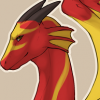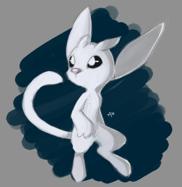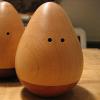Hellos, I've been having a bit of trouble working with visual artists lately, mostly in trying to figure out my process in working with them, and the process I should have them doing in terms of steps to making the game art, would you guys have any advice? If feels like my inexperience is slowing things down too much. >.<
game design and working with visual artists
Hey! What's been your process/experience so far? Just to calrify: You've posted this in the game design section so are you worried this is effecting the fundamental design of the game in some way? Or that it's being difficult to communicate what you need from the artist because they're not grasping the game design?
might of fit better in team management in the business forum now that you mention it, it's more figuring out how to allow the artist to implement my design, what I need to write down so they know what to draw, and then the process they need to follow to create the assets(like the steps needing to be taken I think?)
I'm wearing a lot of hats, so can be hard to tell where something fits in terms of where to ask, sorry about that(I'm also pretty new at this as well.)
Ack don't worry - I'm sure someone can move it for you if you wanted, might help improve your chances of finding a good answer if it's located there.
I'm very new to this process myself, I've not worked with visual artists before. However, some things off the top of my head:
- Perhaps you just need to literally list the assets you need created: isometric dragon sprites that look like <blah blah> and it's different animations etc.
- Particular tile sets you need etc.
Maybe give them a creative document giving them an overview of the game and your ideas for the overall look/feel and theme of the game; ask them to mockup a few ideas based on those aesthetics etc.
It sounds like you're exploring the visual style of your game a bit and you're unsure of how it's going to look outside of your head. I think ya need to find a visual artist who will be patient, who will keep asking you questioins (and vice versa) and who will give you early and constant feedback. Someone who will develop it with you closely :).
I hope some of that helps a bit! Ha ha.
I've had some troubles recently with artists as well - so I'm mostly just repeating some of the advice that was given to me.
It helps to have lots of notes for them to review. Technical notes including visual examples of the technical requirements based on how the code handles the art. Basically assume they don't know anything about games or code at all.
Something that I left out, which in the end gave me poor results, was style notes. I had just given them a few of my actual "final" images and told them to repeat the style and gave them a few sparse notes. They kept the color palette because i specified that - but each ended up using different styles from one another and my examples. I should have gone and made zoomed in views of the specifics of the style, the steps and tools that I used to get the results, etc. I'll probably end up doing a style-tutorial next time around.
Hellos, I've been having a bit of trouble working with visual artists lately, mostly in trying to figure out my process in working with them, and the process I should have them doing in terms of steps to making the game art, would you guys have any advice? If feels like my inexperience is slowing things down too much. >.<
Here are my experiences:
1. Try to establish a common visual vision. This could be a concept, some example texture, models etc. Just that all people, you and your artists, have some visual references.
2. If you don't have the money to get a technical artist, the interface between programming and art, on board, you need to do the job. So learn to use the tools to modify the art-content. In a 2d game this is quite easy, but in a 3d game you will have a harder time. Nevertheless, you will touch almost everything which got delivered by the artist to get in a game-engine-ready state. On the other hand, it is much cheaper to tweak the last technical issues yourself instead of teaching every artist to deliver the engine-ready content. With some luck you get your hands on a professional artist who knows to work with UDK or crytek, so using these engine will have an advantage.
3. If you have several artists, it is important to have a lead-artist, one which ensures the consistency of art. Every artist has his own style and you need someone who oversee it. If you don't have one, you need to be the lead-artist yourself. Even if you can't produce art yourself, you should select the right references. References are really important. If you work with professionals this will be not a big issue, but it gets interesting if you work with rookie artists which just don't use references at all (nah... I know how a human looks like).
4. Use a iterative art creation process. Don't wait until the artist has finished the content. Review it at pre-defined stages to give feedback. Changing the mesh after the model has been textures, rigged and animated is a lot more expensive then doing it right after the modelling stage.
5. Expect that you will be really involved a lot in the art creation process unless you hire a techinical-artist, a lead-artist, a concept-artist and/or professional artists.
6. In a small project, it could be wise to assign certain tasks in the art content creation to single artists. These are
- scuplting/modelling
- texturing
- rigging
- animation
- 2d elemets (UI)
- content: properties
- content: characters
- content: environment
7. Cleary define what you need. Telling the artist to deliver some monster sounds easy, but eventually you need to integrate this monster into your game mechanism. So, think first about what game mechnism/feature you have and tell your artist what monster you expect, e.g. an undead humanoid creature, which attacks you in an underwater shipwreck, half human, half fish.
8. It would be a lot easier and cheaper if your game is already existing as prototype using placeholder art and is funny. You will change your game design frequently and a lot of modifications will result in dropping art, creating new art and modifying existing art. This is frustrating and expensive.
9. Remember the 80:20 rules, that is 80% of the progress uses only 20% of the time/efforts, but the last 20% of the progress uses 80% of the time/effort. Using only the quick/dirty art content during the wild game design time (-> 8.), and polish the art when the game is ready for release.
sounds like a artist experienced in the field, those get expensive I bet, XD
I understand, I'm broke too ha ha! :p However, the above advice is great. I hope it helps.
I've been following this thread since I'm not much of a leader, so I'd give my thanks to Ashaman73 as well. Lots of good info.
You will change your game design frequently and a lot of modifications will result in dropping art, creating new art and modifying existing art. This is frustrating and expensive.
This has been a biggie in my project and past projects as well. I minimized time-wasted by only working up to the level necessary to define the look. So instead of multiple character armors/outfits etc, I just did one. Instead of 5 different trees, i did one tree, etc - finished to what i felt at the time was "final". Of course they need up not being final and I've completely revised the look about 3 times - but it didn't require remaking all of the art. Just one character, one tree, one or two ground tiles, etc etc.
If I had spent the time making 9 armor sets with full animation and then decided to revise the whole look - I likely would have gotten into about 2-3 of them and then abandoned the project completely, which has happened to me a few times with other projects that dead-ended.
The added benefit to this is that it gets your project into a "looks good" state much quicker. It looks like a game, not just scribbles by a aimless madman pretending to be a game designer. That really helps a lot if you're working alone. Once you start to feel overwhelmed, you can at least step back and see something that looks like a game or show other people.







